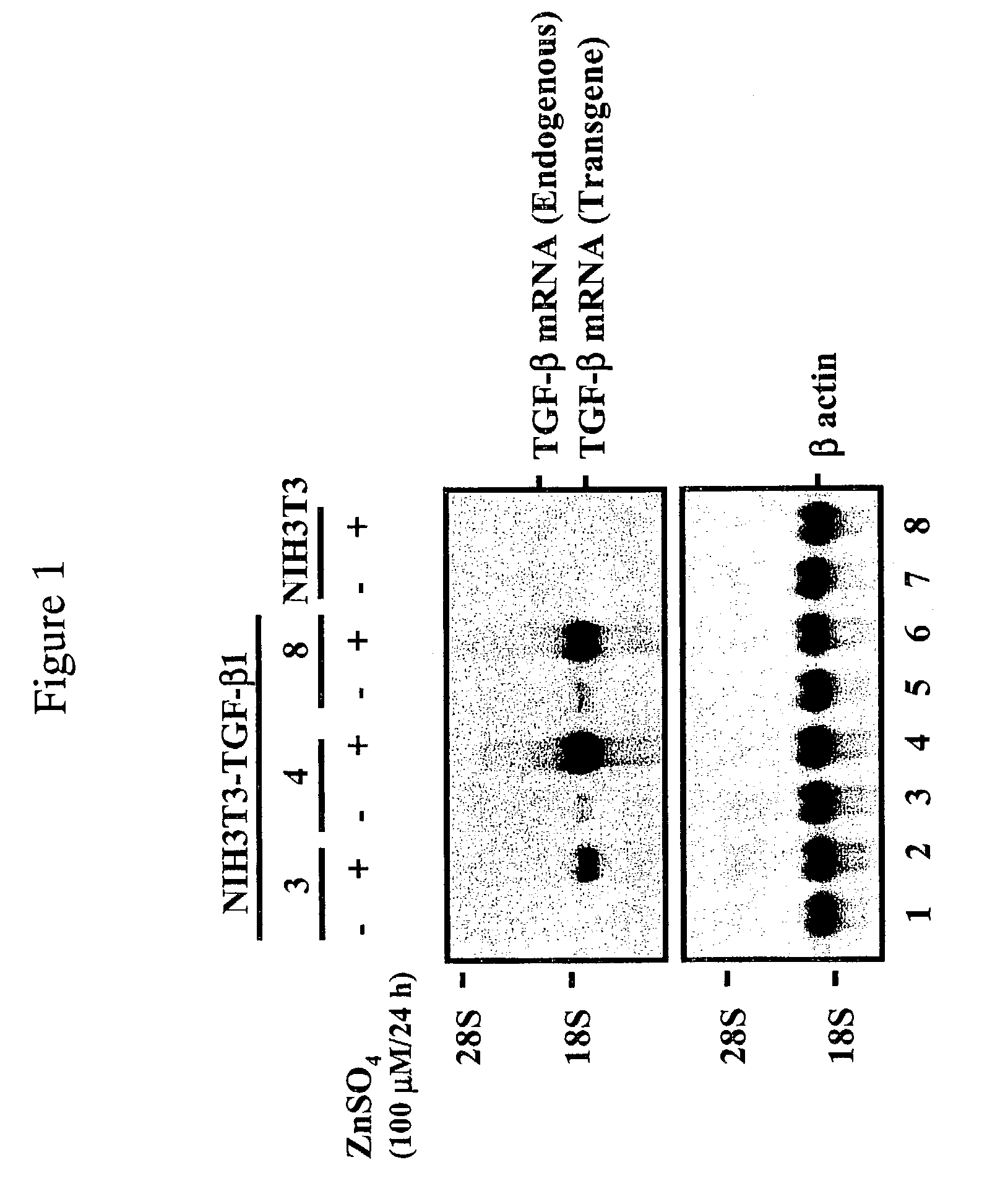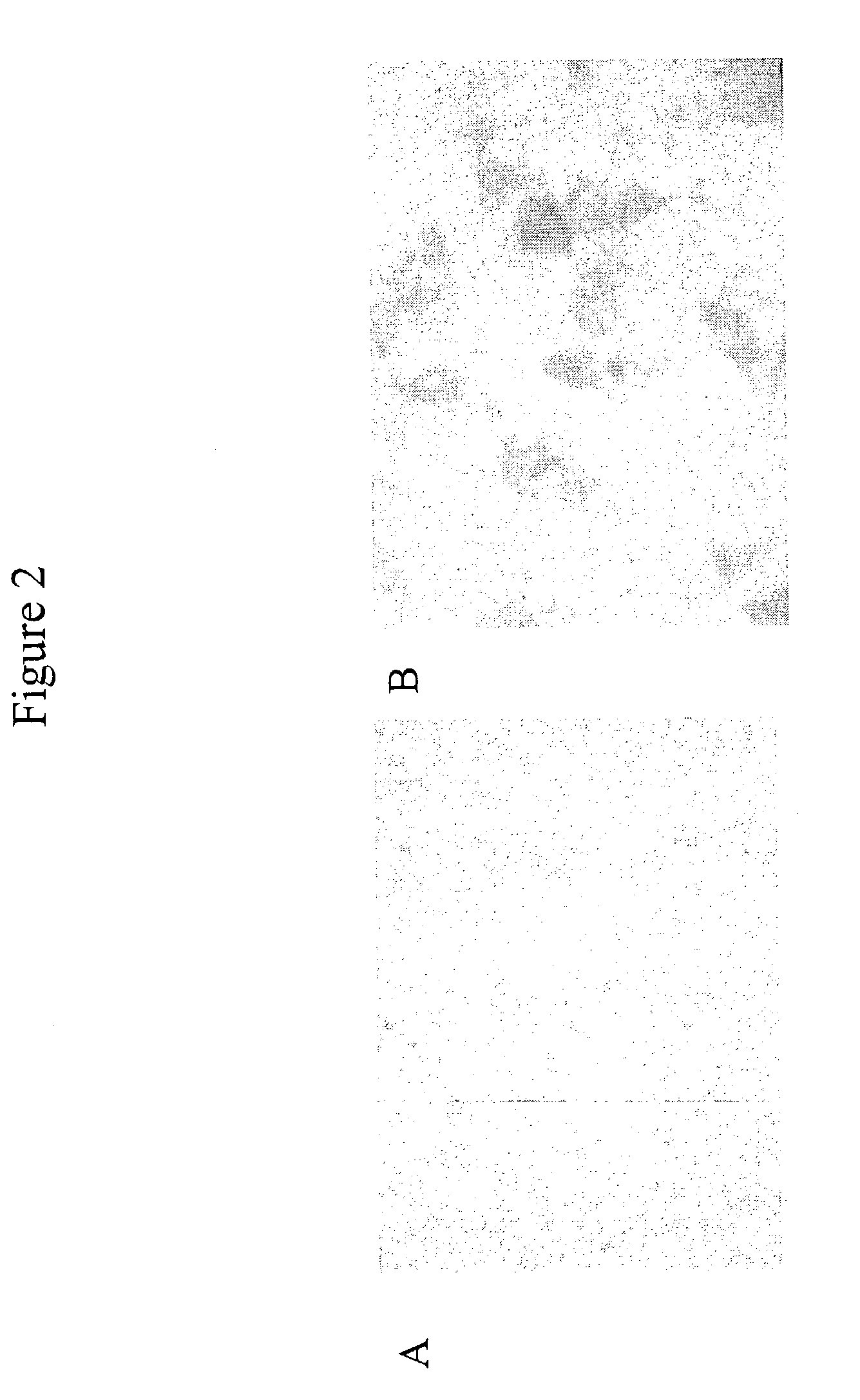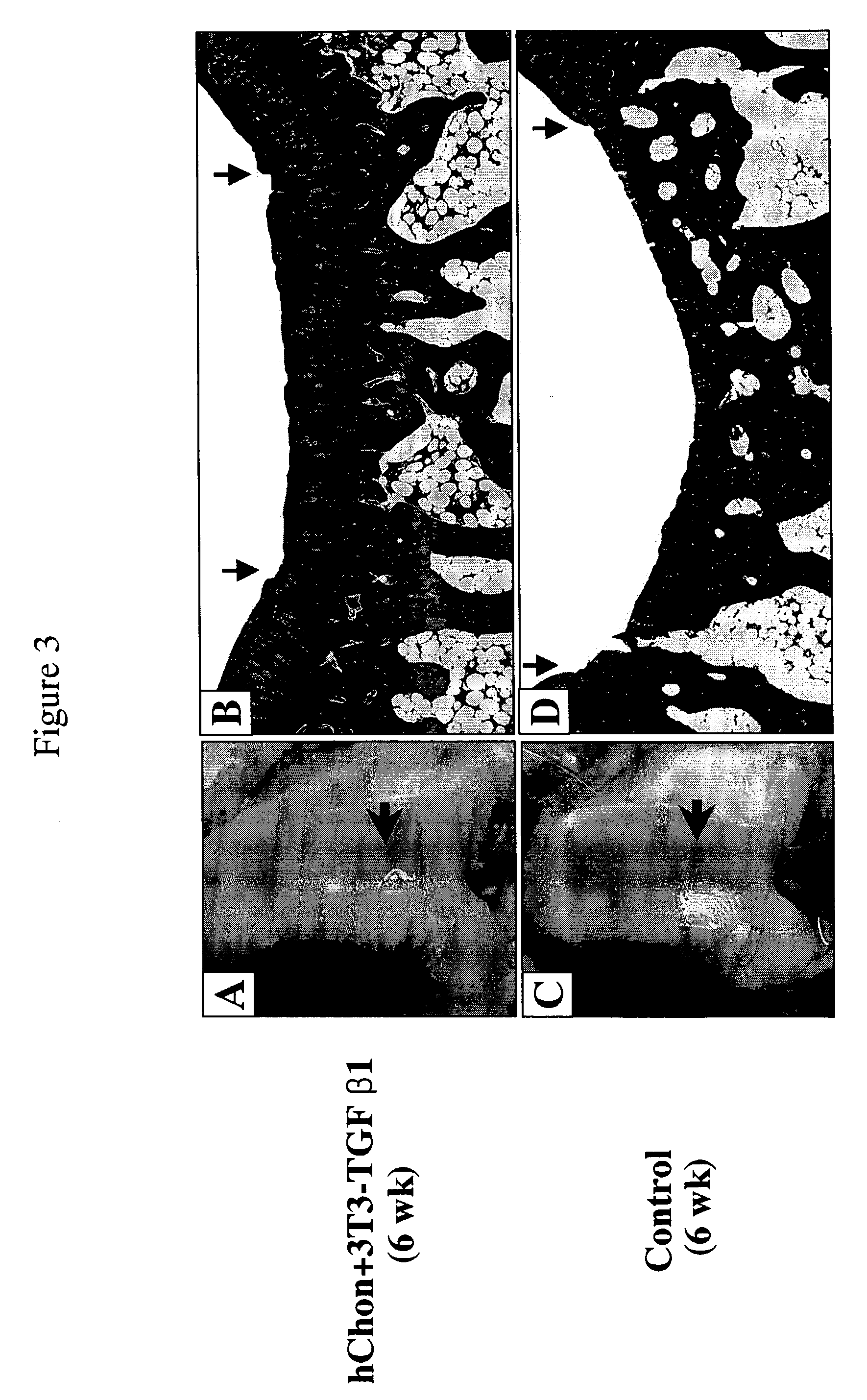Mixed-cell gene therapy
a gene therapy and mixed-cell technology, applied in the direction of cell culture active agents, non-active genetic ingredients, drug compositions, etc., can solve the problems of exacerbated the tendency of anti-arthritis drugs to produce serious side effects, inefficient drug delivery routes such as oral, intravenous or intramuscular administration, and frequent repeated injections
- Summary
- Abstract
- Description
- Claims
- Application Information
AI Technical Summary
Benefits of technology
Problems solved by technology
Method used
Image
Examples
example i
Materials and Methods
[0105]Plasmid Construction
[0106]The plasmid pMTMLVβ1 was generated by subcloning a 1.2-kb Bgl II fragment containing the TGF-β1 coding sequence and a growth hormone poly A site at the 3′ end into the Bam HI site of pMTMLV. The plasmid pMTBMP2 was generated by subcloning a 1.2-kb Sal I-Not I fragment containing the BMP2 coding sequence into the Sal I-Not I sites of pMTMLV. pMTMLV vector was derived from the retroviral vector MFG by deleting entire gag and env sequences as well as some of ψ packaging sequence.
[0107]Cell Culture and Transduction—The TGF-β and BMP-2 cDNA cloned in retroviral vectors were individually transduced into fibroblasts (NIH3T3-TGF-β1 and NIH3T3-BMP-2) and chondrocytes (hChon-TGF-β1). They were cultured in Dulbecco's Modified Eagle's Medium (GIBCO-BRL, Rockville, Md.) with 10% concentration of fetal bovine serum.
[0108]To select the cells with the transduced gene sequence, neomycin (300 μg / ml) was added into the medium. The cells with TGF-β1 ...
example ii
Experimental Methods and Results
[0112]Regeneration of Rabbit Articular Cartilage Defect—New Zealand white rabbits weighing 2.0–2.5 kg were selected for the animal study. These rabbits were mature and had a tidemark. The knee joint was exposed and a partial cartilage defect (3 mm×6 mm, 1–2 mm deep) or full-thickness defect (3 mm×6 mm, 2–3 mm deep) was made on the hyaline cartilage layer of the femoral condyle with a surgical knife. Either control human chondrocytes (hChon), or mixture of hChon and NIH3T3-TGF-β1 cells, or NIH3T3-BMP-2 cells were injected into the rabbit knee joint with the defect. These cells (15–20 μl of 2×106 cells / ml) were loaded to the top of the defect and then left in the defect for 15–20 min to allow the cells to permeate the wound before suturing. In the experiment in which mixtures of hChon and NIH3T3-BMP-2 cells were injected into rabbits with full-thickness defect, these mixed cell compositions were injected into the defect 3 weeks after making the defect. ...
PUM
| Property | Measurement | Unit |
|---|---|---|
| Temperature | aaaaa | aaaaa |
| Temperature | aaaaa | aaaaa |
| Composition | aaaaa | aaaaa |
Abstract
Description
Claims
Application Information
 Login to View More
Login to View More - R&D
- Intellectual Property
- Life Sciences
- Materials
- Tech Scout
- Unparalleled Data Quality
- Higher Quality Content
- 60% Fewer Hallucinations
Browse by: Latest US Patents, China's latest patents, Technical Efficacy Thesaurus, Application Domain, Technology Topic, Popular Technical Reports.
© 2025 PatSnap. All rights reserved.Legal|Privacy policy|Modern Slavery Act Transparency Statement|Sitemap|About US| Contact US: help@patsnap.com



